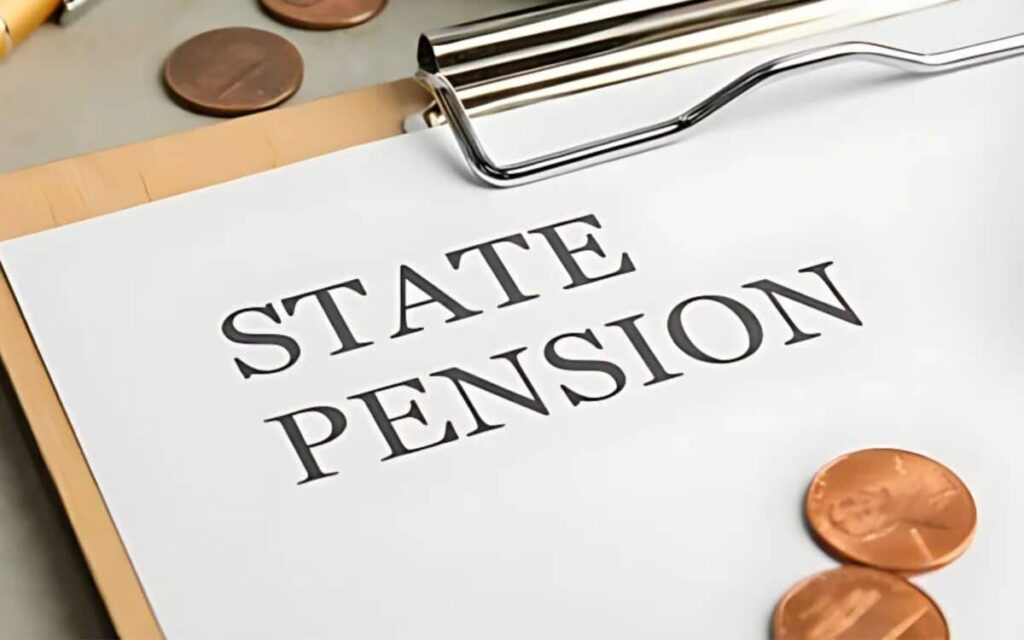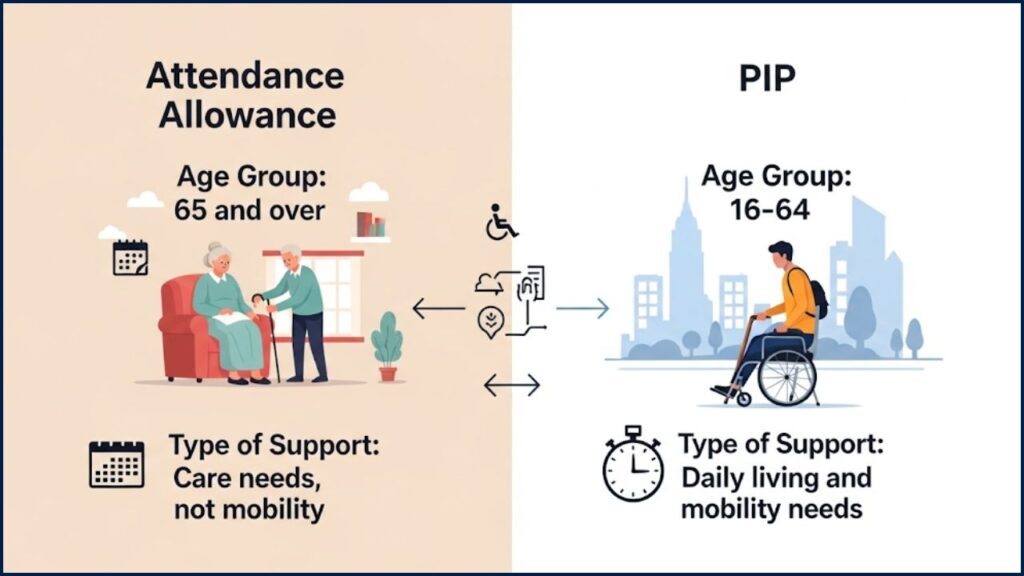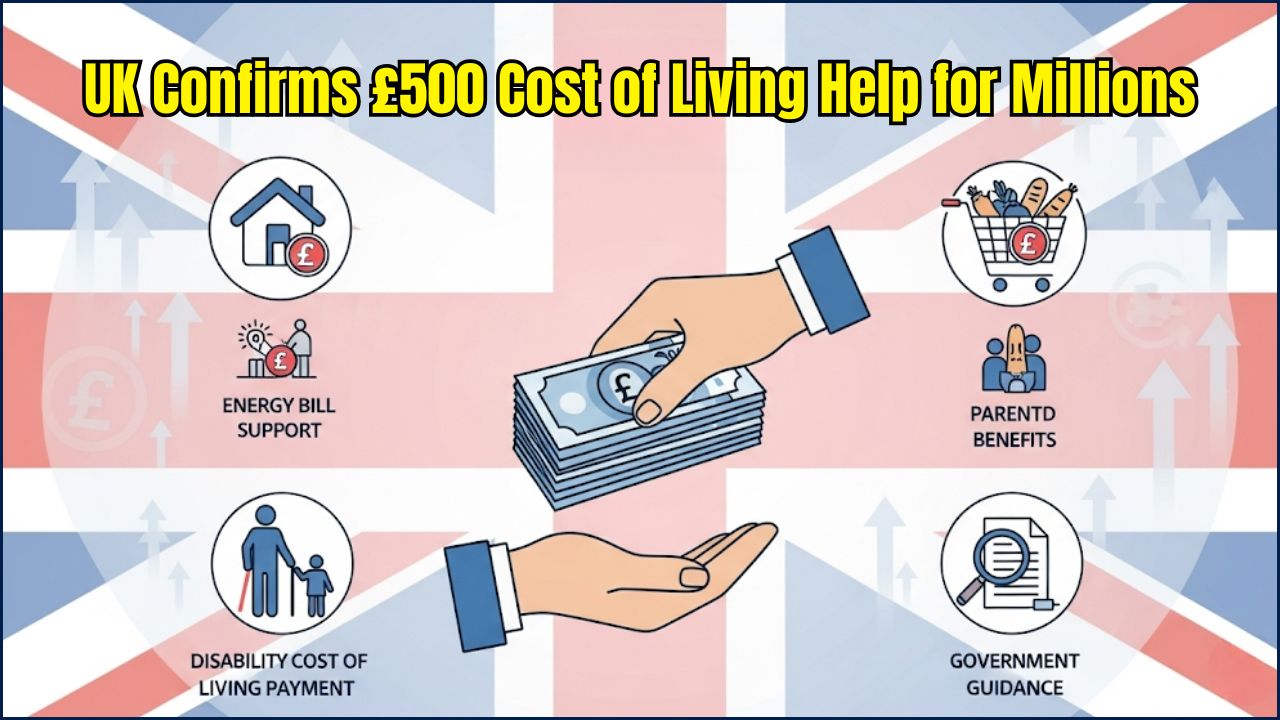If you’ve ever wondered how your aging loved ones can get some extra financial help, you’re not alone. The good news? The UK’s Attendance Allowance, worth up to £441 a month, could be a game-changer—especially if someone in your family lives with a disabling medical condition. In this guide, we break down everything you need to know, from eligibility to application, in a way that’s easy to understand and genuinely helpful.

Attendance Allowance isn’t a new thing, but it’s definitely one of those best-kept secrets that too many people overlook. Whether you’re a caregiver, a retiree, or just someone looking to support a parent or grandparent, this article gives you the real scoop on what the benefit is, who qualifies, and which 57 medical conditions the DWP looks at most closely.
£441 a Month in Attendance Allowance
| Feature | Details |
|---|---|
| Monthly Payment | Up to £441.60 (Higher Rate) |
| Eligibility Age | State Pension Age (currently 66+) |
| Benefit Type | Tax-free, not means-tested |
| Used For | Personal care needs due to disability or illness |
| Qualifying Conditions | 57 medical conditions (see below) |
| Application Method | AA1 Form – GOV.UK Website |
| Extra Perks | May lead to higher Pension Credit, Housing Benefit |
If you or someone you love is over State Pension age and struggling with daily tasks because of a health condition, Attendance Allowance could provide up to £441 a month to ease the burden. From Alzheimer’s to arthritis, the 57 conditions commonly linked to approval cover a wide spectrum. Don’t leave money on the table—take the time to apply, and give yourself or your loved one the care and dignity they deserve.
What Is Attendance Allowance?
Think of Attendance Allowance as a helping hand from the UK government for folks over State Pension age who need support because of a physical or mental health condition. It’s there to help cover costs related to care needs, like hiring a caregiver, buying assistive devices, or just making life a little easier.

Now here’s the kicker: this benefit is not based on income or savings, and it doesn’t require you to have a caregiver currently helping you. If your condition means you need frequent help or supervision, especially during the day and night, you may qualify for up to £110.40 per week—that’s about £441 a month.
Who Can Claim It?
You might be eligible if:
- You’re 66 or older (State Pension age)
- You live in England, Scotland, or Wales
- You’ve had care needs for at least 6 months
- You need help with personal tasks like dressing, bathing, or eating
It doesn’t matter if you’re getting that help or just need it—the need alone can qualify you.
How Much Can You Get?
| Level of Help Needed | Weekly Rate | Monthly Equivalent |
| Day or Night Help | £73.90 | £295.60 |
| Day and Night Help / Terminal Illness | £110.40 | £441.60 |
Real-Life Example: Meet Mary
Mary, a 78-year-old retired teacher, lives with advanced arthritis and early-stage dementia. Though she lives independently, she often struggles with dressing, cooking, and managing her medications. After applying for Attendance Allowance with the help of her daughter, she now receives the higher rate—£441 a month—which helps pay for a part-time carer and home modifications like grab bars and a stairlift.
This benefit helped Mary stay safe and independent at home without relying entirely on family members.
The 57 Medical Conditions That Could Qualify You
The DWP uses a wide range of health conditions to assess eligibility. While the medical condition alone doesn’t guarantee approval, these 57 conditions are among the most commonly linked to successful claims.
Neurological and Cognitive Conditions
- Alzheimer’s
- Parkinson’s
- Stroke after-effects
- Multiple sclerosis
- Dementia (all types)
- Epilepsy
- Cerebral palsy
Cardiovascular and Respiratory Illnesses
- Heart failure
- Coronary artery disease
- COPD
- Asthma (severe)
- Pulmonary fibrosis
Autoimmune and Inflammatory Disorders
- Rheumatoid arthritis
- Lupus
- Crohn’s disease
- Ulcerative colitis
Sensory and Organ Impairments
- Blindness
- Severe hearing loss
- Kidney disease (on dialysis)
- Liver failure
Cancer and Terminal Illness
- Any metastatic cancer
- Leukaemia
- Patients receiving chemo or radiotherapy
Mental Health and Cognitive Impairments
- Bipolar disorder
- Schizophrenia
- Severe anxiety
- PTSD
Others
- Fibromyalgia
- Chronic fatigue syndrome
- Huntington’s disease
- Diabetes (with complications)
Hidden Perks of Attendance Allowance
Many folks don’t realize that receiving Attendance Allowance can unlock other benefits. These include:
- Pension Credit top-ups
- Council Tax Reductions
- Extra Winter Fuel Payments
- Access to free home adaptations or community support programs
It’s like a domino effect of helpfulness. Once you qualify, you could be looking at hundreds more in savings every month.
How to Apply for Attendance Allowance
Step 1: Get the Form
You’ll need the AA1 form, which you can:
- Download from the official site
- Order by phone: 0800 731 0122
Step 2: Fill It Out Thoroughly
Use clear, honest language. Be specific about:
- How often you need help
- What time of day or night
- How your condition affects your everyday life
Step 3: Send It In
Mail the completed form to the address provided. Don’t forget to keep a copy for your records!
Attendance Allowance vs. PIP – Which One Is For Me?
It’s easy to mix up Attendance Allowance and Personal Independence Payment (PIP), but they’re for different stages of life and types of support. Here’s a quick comparison to help you understand which might apply to you:

| Feature | Attendance Allowance | Personal Independence Payment (PIP) |
| Age Group | State Pension age and over | 16 to State Pension age |
| Focus | Help with personal care or supervision (day and/or night) | Daily living activities and/or mobility needs |
| Mobility Component? | No | Yes (separate component) |
| Means-Tested? | No (income and savings don’t affect it) | No (income and savings don’t affect it) |
| Medical Assessment? | Usually no face-to-face assessment required | Often involves a medical assessment |
| Application Process | Primarily a detailed paper form (can be requested by phone for backdating) | Form plus potential assessment |
| Current Rates (Weekly) | Lower: £73.90, Higher: £110.40 (as of 2024/25) | Varies by component and rate, generally higher than AA |
Pro Tips from the Pros
- Document Everything: Keep a diary of your daily challenges for a week.
- Ask Your Doctor: A supporting note from your GP can boost your case.
- Be Real: Don’t underplay your needs out of pride. If it’s hard to get dressed alone, say it.
- Get Help: Charities like Age UK or Citizens Advice can guide you through the form.
FAQs
Can I get Attendance Allowance if I live in a care home?
Yes, if you’re paying for it yourself. If the local authority is covering the costs, you can’t get the benefit.
Does this affect my other benefits?
It doesn’t reduce them—in fact, it could increase your entitlement to Pension Credit or Housing Benefit.
How long does it take to get a decision?
Usually around 8-12 weeks, depending on whether additional information is needed.
Can I apply for someone else?
Yes, especially if they’re not able to handle paperwork themselves. You’ll need their permission, unless you have Power of Attorney.
Can I get backdated payments?
Yes! You can request backdating up to 6 months if you can show you’ve needed help during that time.












